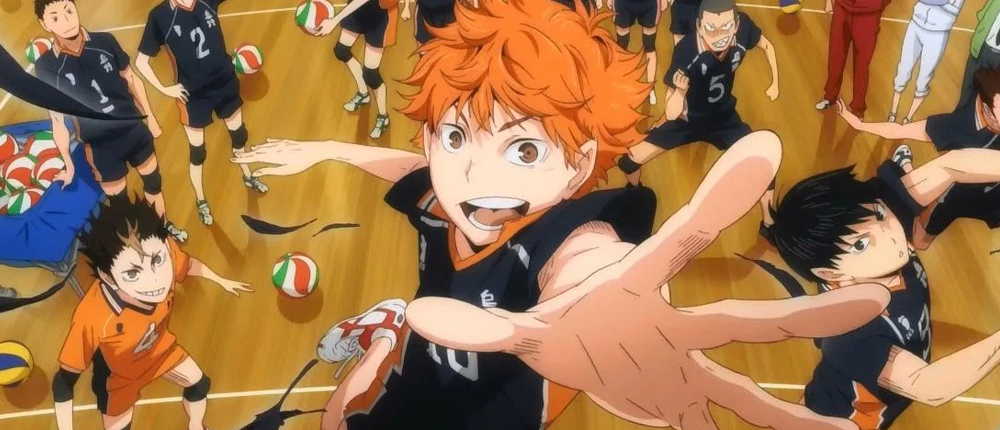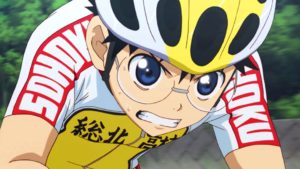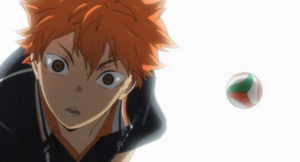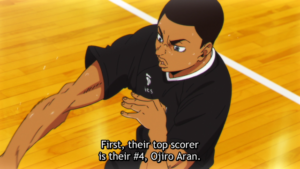
Recently, I did something I never would have anticipated in my not-exactly-sedentary but far from pedometer-busting adult life: I bought a bicycle. I wish I could say it was in an effort to get fit or reduce my carbon footprint, but no. The shiny two-wheeler I’ve made it my mission to master can be traced back solely to 137 consecutive episodes of my new fave, Yowamushi Pedal.

‘Yowamushi Pedal’. Via Prime Video
I’m hardly the only would-be sportsperson to be spurred on by anime. Despite the longstanding stereotype that geeks and sports don’t mix, more and more athletes are wearing their fandoms on their sleeves – quite literally in the case of Dutch gymnast Casimir Schmidt who boasts Mew and Toad tattoos, and whose fellow countryman Kiran Badloe made waves with his iconic Avatar: The Last Airbender haircut in 2021.
The hype is so real that there were in fact several anime references spotted at the Paris Olympics and at the 2020 Tokyo Olympics before it, which even incorporated anime into their onsite entertainment, broadcasting songs from Slam Dunk, Haikyuu!!, and more over the top of their real-world counterparts, making for possibly the raddest live-action ever.
But what is it about animated athleticism that makes it so deeply compelling? Let’s get To The Top– I mean bottom, of what we love so much about sports anime.
There’s No ‘I’ in ‘Team’
Unlike the majority of genres, sports anime is almost always reliant on ensemble casts. As illustrated by Eyeshield 21’s Devil Bats and their original three-man team, you’re not going to get very far without supporting members!
With most sports calling for at least a handful of players, creators need to populate their stories with diverse and compelling characters before their series even gets off the ground. A bright-eyed, enthusiastic protagonist? You got it! An ultra-serious rival? Of course! These tropes aren’t unique to sports anime, but what this genre does bring to the table is the variables of skill and natural talent.
Not All Players Are Created Equal
In the case of the aforementioned, underrated grid iron epic, Sena (who reluctantly assumes the mantle of Eyeshield 21) is FAST, ludicrously fast. Honed from years of evading bullies, it’s his lightning-fast legs that lead the captain of the football team, Hiruma, to recruit the inexperienced running back to join their ranks.

‘Eyeshield 21’. Via Netflix
Despite having no history nor affinity for football, Sena takes to the game like a Mighty Duck to water; however, not all shounen protagonists have the same devilish luck. Physical and psychological barriers often stand in the way of our heroes achieving their athletic dreams, with height being an especially common obstacle, as seen in Ahiru no Sora and Haikyuu!!.
These every day, relatable traits make it nigh on impossible NOT to empathise with these struggling young heroes who, through sheer will and the power of friendship (and frenemy-ship), overcome their weaknesses, frequently turning their shortcomings into strengths.
Play By The Rules
I cannot count the number of times I’ve left family gatherings scratching my head over what the heck just happened in the Super Rugby (although, I hope they gave me points for try-ing? Get it, “try”? …No?). Enter All Out!!, and I can finally tell you what the purpose of a scrum is.
Despite the stylistic, over-the-top special moves that some series boast, such as Kuroko’s intense Ignite Pass or Phantom Shot in Kuroko no Basket, these anime are often exhaustively researched, accurately depicting the rules of the real-world sports they represent. So much so, certain series have received the ultimate seal of approval – endorsement from world class athletes.
Professional figure skaters Evgenia Medvedeva and Masato Kimura have famously heaped praise upon 2016’s mega-hit, Yuri on Ice!!, the latter of whom even went so far as to recreate the show’s opening theme in his own routine!
It’s Not Whether You Win Or Lose, It’s How You Play The Game
While winning a coveted place in the Inter High is the driving force of many a sports anime, success is not always to be (some spoilers ahead, folks). After 24 painstaking episodes leading up to the final volley in Haikyuu!! season one, our hero team, Karasuno, are dealt a crushing blow by the more experienced Aobajohsai High, dashing their dreams of competing on the national stage… at least for now. It’s devastating, for both players and viewers alike. How could our crows come so far only to lose?!

‘Haikyuu!!’. Via Haikyuu!! Wiki
It’s easy to become complacent with shounen series, expecting the hero to always triumph through adversity; but with no life-or-death stakes to speak of, sports anime has a unique capacity to break from the norm. Victory is no longer assured by virtue of being a protagonist, making for some truly enthralling television. The episode in which Karasuno loses, “Removing the ‘Solitary King’”, is in fact amongst the highest rated in the series, going to show that it’s truly not whether you win or lose that makes for a great sport series, it’s how hard you make your fanbase cry.
Major losses bring out the heart of these anime. Comedic relief characters hiding streams of tears at the realisation of defeat – that cuts deep. The only thing more relatable than a shounen protag striving to do their best is a shounen protag striving to do their best and failing. It hurts, but watching them dust themselves off and get back to work can be (and often is) more inspiring than a predictable underdog victory.
Genres Within Genres
It would be easy to call the genre repetitive, and you wouldn’t necessarily be wrong. Ragtag group of lads train for the Inter High. Ragtag group of lads compete at the Inter High. Complication, crying, championships, etc. BUT – now here’s the thing – you get to do it all again with tennis! And sumo! And kabaddi!
Seriously though, whatever your genre of preference, there’s likely a sports anime to satisfy your tastes, even if you’re looking for something more esoteric. After dark and gritty? Try Megalo Box or the classic that inspired it, Ashita no Joe. Prefer bizarro avant-garde? Sit down with Ping Pong: The Animation from acclaimed director Masaaki Yuasa.
Recurrent tournament themes aside, sports anime still bring the spice of life, with a variety of vibes and visual styles to keep the genre up on the winners’ podium.
Room To Grow
Just like our best boys, there’s always room for improvement, even within genres. Sports anime hasn’t typically been the most diverse in its representation, though that does appear to be slowly changing.

‘Haikyuu!!’
Haikyuu!! received praise for its introduction of Aran Ojiro, a Black member of the Inarizaki team, who was not only revealed to be their top scorer, but a contender for Japan’s top three players. Stars Align and Yuri on Ice!! were breaths of fresh air for the LGBTIQA+ community, exploring gender and sexuality with surprising tenderness. Breakers! provided a glimpse into the world of Parasports, featuring wheelchair basketball, goalball, swimming, and track; while an ever-increasing number of female characters take to the pitch as competitors in series such as Tamayomi, Rinkai!, and Hanebado!.
Of course, there’s still a sizable way to go until we can call the genre truly diverse, but if the last few seasons are any indication, we’re in for all new heights of sports anime in the coming years.
There’s a Sport (Anime) Out There For Everyone
With a growing number of sports being represented both at the Olympics and in animated form, there’s never been a better time to jump into the world of sports anime. Who knows, it might inspire you to start your own personal training montage to do battle in the world’s largest tournament arc when it arrives in Brisbane in 2032. Although with the Australian team winning their first gold medal in the Women’s Cycling Road Time Trials this year in Paris, I might just put this bicycle back into the garage.
With only 87 days to go until Supanova Comic Con & Gaming’s milestone 100th event, grab your tickets to their penultimate 99th show in Adelaide, and Brisbane’s three-day extravaganza now via Moshtix!








